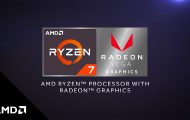Article
Sony Vaio Pro 13 Ultrabook v Apple MacBook Air For Photographers
My Comments
Previously, Apple had a stronghold on computing for the creative industries with most of their Macintosh computers. This was even since the Macintosh platform was launched where these computers with their graphical-user-interface being run alongside a laser printer brought in the concept of desktop publishing.
Similarly, they had a few years cornering the mobile computing platform with their iPhone and iPad devices. It also included capturing the premium “stylish computing” market with their MacBook Air and, in some cases, the MacBook Pro laptops.
Now a few computing devices and platforms are challenging Apple in a lot of these fronts. Over the last year, Samsung, HTC and Sony have fielded some very impressive highly-capable smartphones that have put the iPhone on notice like the Samsung Galaxy S3 and S4. These phones also show an impressive “cool” style about them as well as the phones being able to take as good an image as an Apple iPhone.
As for mobile tablets, the 7” coat-pocket tablets like the Google Nexus 7 have created a distinct market niche which Apple couldn’t successfully fill with the right device. Similar, Sony had tendered the XPeria Z which has come close to competing with the iPad as far as 10” tablets are concerned.
Over the last few years, there have been a number of laptops and notebooks that have answered the MacBook Pro and MacBook Air in many ways. For example, the HP Envy 15-3000 which I previously reviewed provided a construction look and feel that is very close to the MacBook Pro series of laptops. Lately, Sony fielded the VAIO Pro 13 which is a Windows 8 Ultrabook that has been described in a review by “The Age” as having a photo-grade display and is capable of answering a similar-size MacBook Air as a portable workflow computer for a professional photographer. Here, this one implemented a highly-controllable Full HD display which was able to yield the proper colour temperature for photography.
As well, companies who have a strong presence in the recording and reproduction of music are becoming involved in the quest for improved sound quality in Windows-based laptops. Examples of these include Beats by Dr Dre working with HP to provide improved sound for HP Envy laptops; premium Toshiba laptops being equipped with Harman-Kardon speakers and ASUS laptops having Bang & Olufsen sound tuning. Who knows what would be happening soon with even the conversion of audio signals between the digital and analogue domains being worked on so as to provide a line-level sound quality equal to or better than the Apple MacBook Pro.
Of course, the Windows and Android equipment have supported an “open-frame” operating environment for both the hardware and software where common standards set by industry groups have been respected. For example, the Android smartphones use MicroUSB as a power / data connection, it is easier for users to gain access to the files held on their Windows or Android devices, and users can integrate an Android or Windows device to a Wi-Fi wireless network at the touch of a button using WPS setup.
What I do see is that regular and mobile computing is swinging from Apple being considered the “cool kid” for both these applications to a situation where they are considered a has-been.



